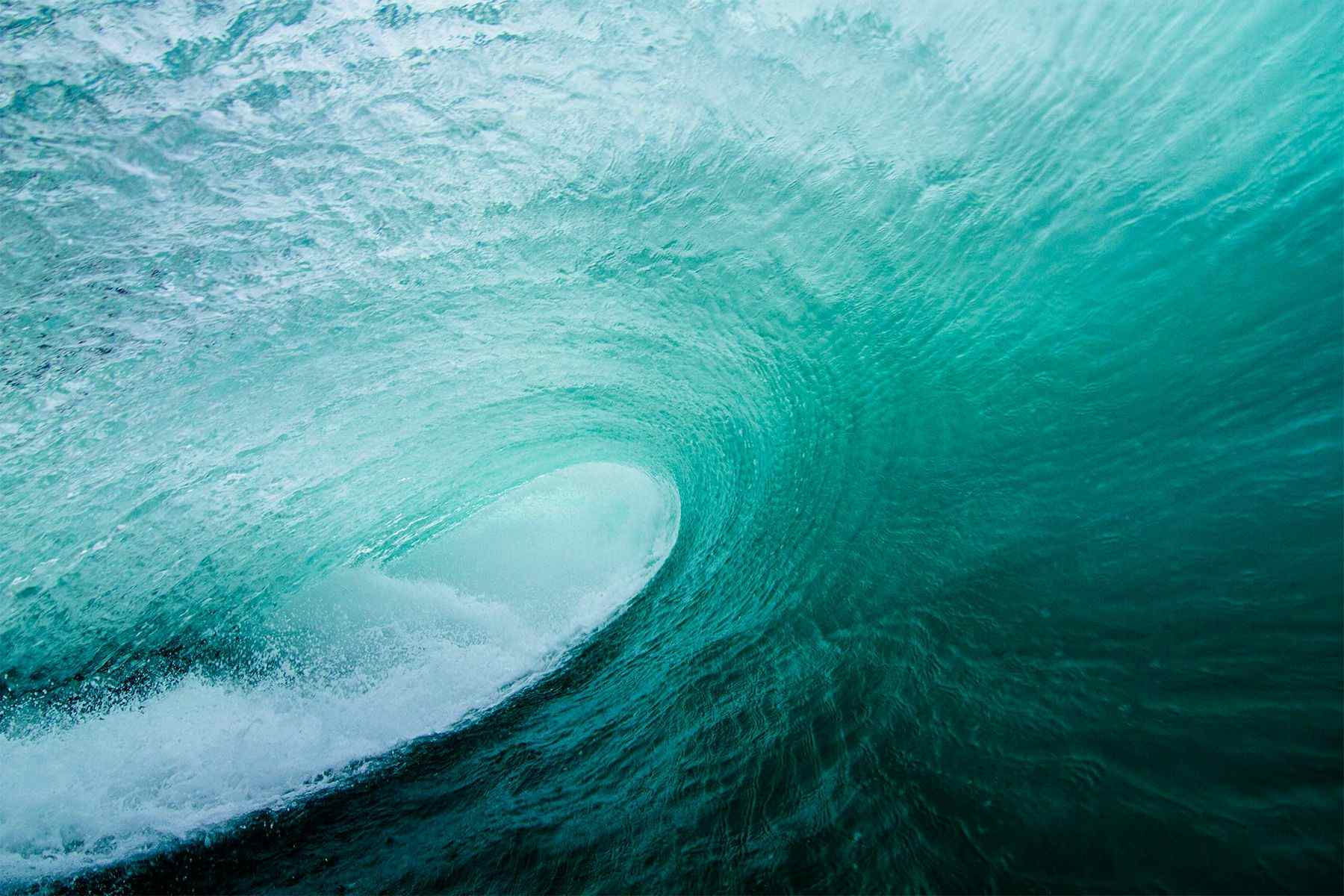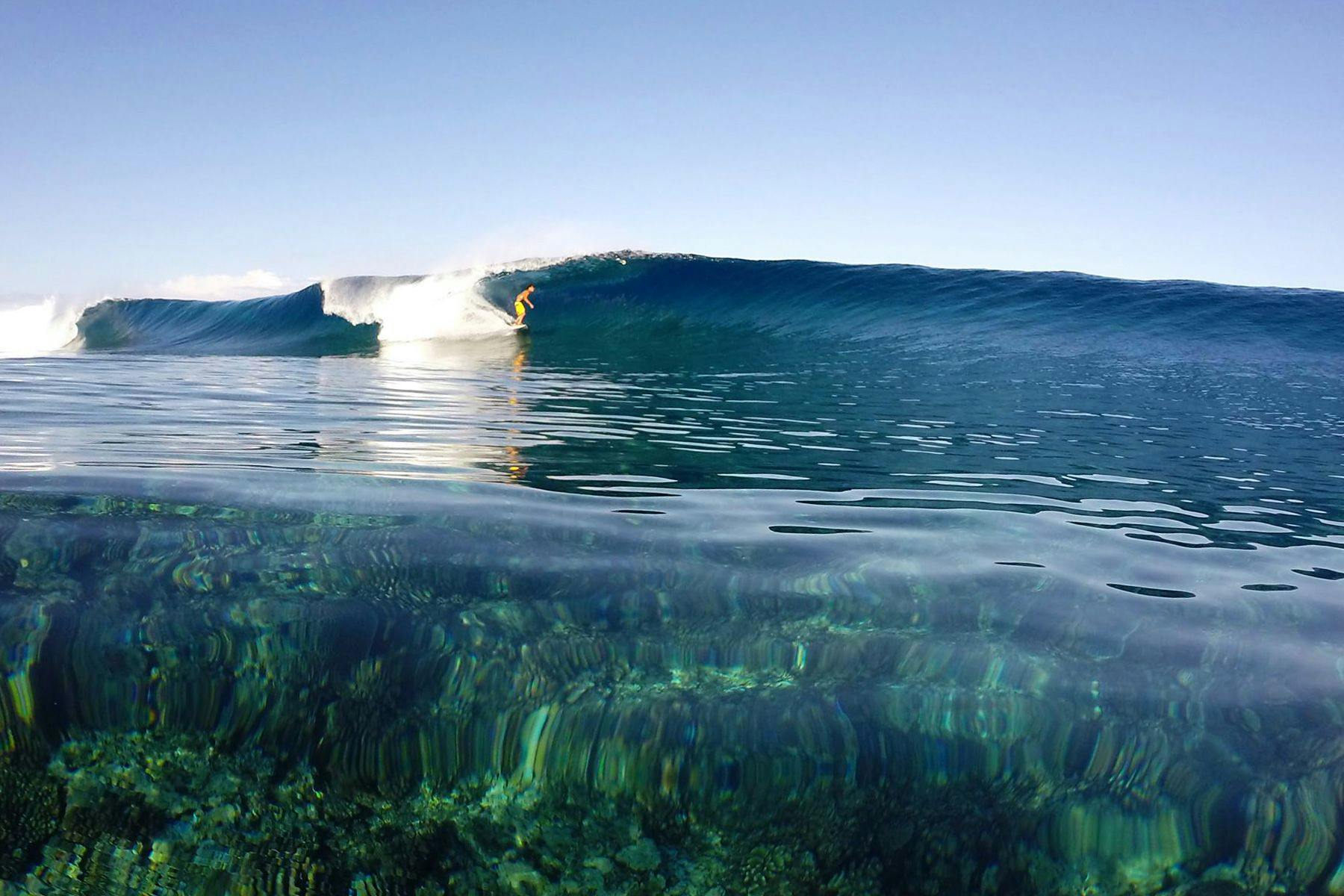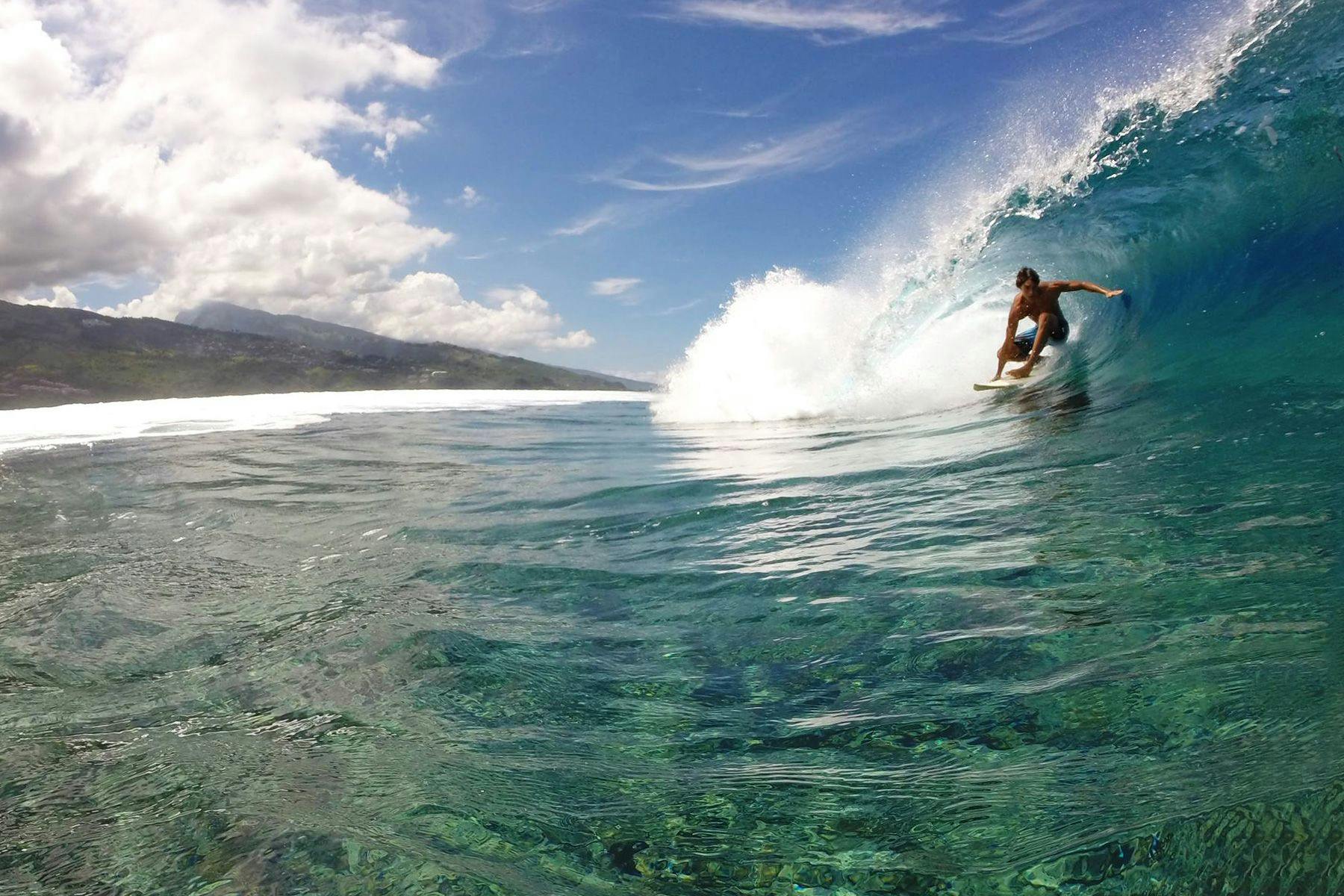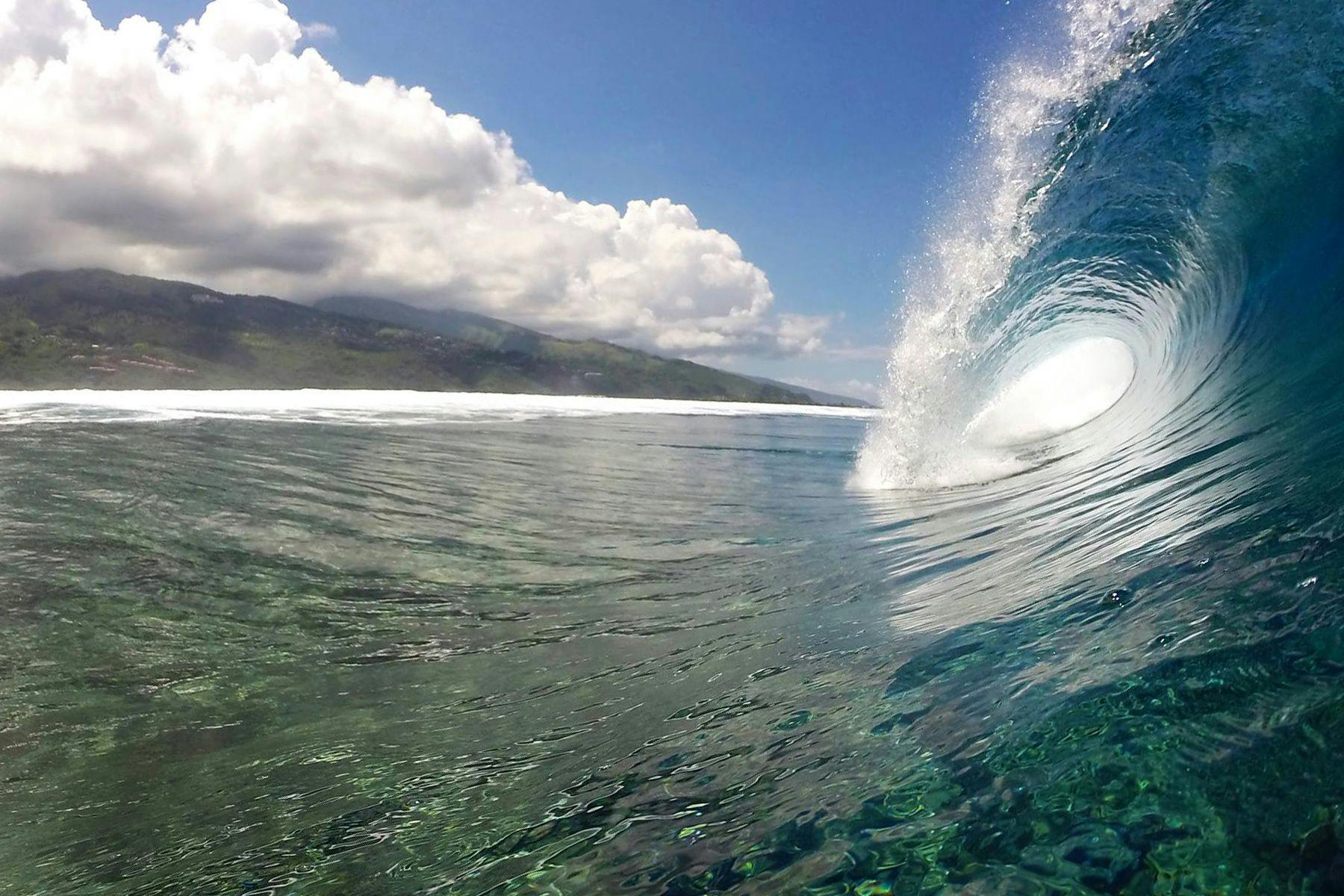Experiences, WipeoutsTaapuna: Lessons From a Scar

What was meant to be a month-long surf trip around Tahiti took a wide and slippery turn one seemingly inoffensive Monday morning. My shoulder and back throbbed with the pain of having hit the reef, but what really caught my attention was the acute sense of reality achieved at the second of impact – one of those moments when time slows down, engraving your memory with the richness of its details. All I could hear was a deafening, long beep, and my father’s words resonating in the background: “Always watch the waves for a few minutes before paddling out”. It seems that I had heard but not listened to them.
The lip was thick, and Taapuna’s elegant aggressiveness demanded respect. A solid body of water smashed the reef without pity, and to be under it wasn’t something that anyone would wish for. I had arrived in Tahiti that very morning, and Taapuna was the first surf spot that I laid eyes on. Bewitched by the idea of being in Tahiti, I hadn’t hesitated to wax my board and jump into the water, disregarding the long paddle I’d have to endure to reach the line-up. I was excited by the sight of the wave and the stories that I’d heard about Taapuna’s surprisingly powerful left-hand barrels. I stroked the water hastily, as if late for something, barely noticing the amount of colours and life below the surface. Once in the line-up, I didn’t give myself time to recover from the 20-minute paddle and began to catch every pulse of swell that formed near the channel. There was no one else out, and as I sat waiting for the next set to come I mused about moving further up to the outermost peak. From what I had managed to read, I knew that the wave had three sections that became more and more challenging the further up you went. Like its cousin Teahupo’o, the left of Ta’apuna begins to break as swell hits the wall of reef that blocks its passage and forms a wave that runs down towards the channel, where it becomes less hollow and eventually loses its power completely. Such a bottom formation induces a hollower take-of at the outer section, making it such that if you fall you find yourself in waist-deep water with nowhere to run. Although I understood this feature, for some reason I chose not to acknowledge it. Unsatisfied with the quick rides I’d caught until then, I disregarded the strong offshore wind and paddled out to the outer peak, hoping to increase my chances of getting barrelled. There was a moment when my intuition told me to stop and turn back, but I ignored it.

As I got to the outside and sat waiting for the next set to come, I noticed people mooring their boats in the channel and paddling over to the inside section. They remained down there, either content with the smaller and chubbier waves or aware of something I didn’t know. Again my intuition warned me of something, and again, I ignored it. I paddled over the first wave of the set so to get a feel of where to position myself for take-off and was amazed by the size of the wall compared to the waves down on the inside. As I went over it, I looked back down to see how high the lip stood and was presented with a colorful slab of reef under what seemed like really shallow water. The next set wave approached looking like it’d break further to the left, forcing me to reposition myself. I kicked my feet frantically to get more speed and move to the right spot, knowing that a decision had to be made right there and then. That’s when my intuition called me for the third time, alerting me to wait for the next wave. But again, I ignored it.

Once near the steepening face I stopped abruptly, sat on my board and used my legs to switch direction, holding the nose with both hands and leaning my body backwards so to speed up the movement. I had made my decision. I paddled as hard as possible and got mentally ready for what seemed like a very late take-off. As I placed my hands on the deck and got ready to pop up, a strong gust of the offshore wind blew a curtain of water into my face, partially blocking vision. In the split second it took for me to shake the water drops from my eyes, I saw how much the face of the wave had hollowed. I was thrown by the lip into an ungraceful fall, with no chance to even consider turning back. Surprisingly, I managed to land on my feet but the momentum of the fall sent my board forward as soon as it touched the surface and I fell with my back on the water, scraping the reef that lay a mere 3ft below the surface.

The impact was so hard that I didn’t acknowledge the pain, nor did I notice the alarming amount of blood dissolving in the water around me. I was in a terrible position, in waist-deep water, my board miraculously floating by my side in one piece, sharp reef below my feet and the next set wave bearing down upon me. I managed to reach for my board just in time to duck-dive the massive wall of water, and immediately focused all of my energy into paddling away from the impact zone. Once in a safe position I looked around, dazed, and realised that the wisest thing to do would be to swim back to the safety of the channel. As I approached the inside section I was welcomed by stares of disapproval. Everyone had witnessed what a silly move I’d made and looked at me with friendly “should’ve been more careful” looks. I sat there for a while, letting the aftermath sink in and trying to figure out the next step to take. Eventually, one of the witnesses asked if I wanted a ride back to shore, since the paddle would take at least 20 minutes and my bloody back could attract the attention of reef-sharks. I feebly nodded, accepting the ride. As we glided back to land on his speedboat, I glanced back at the wave and realised how unfriendly and fierce that outer section looked. By then, the beeping noise inside my head had vanished, but my father’s words continued to resonate.

I’ve head-butted fins, slid on sharp coral, almost ran out of breath, twisted my body in nearly inhuman ways. Lost boards, got caught in rips, hit sandbanks and walked away bruised and bloody. But those were all superficial outcomes; in a sense they only caused a momentary shock, or left a physical scar. No wipe-out has ever scarred me as deeply as hitting the reef of Taapuna. From the second that I chose to paddle for that set wave until the moment that I flew out of the island a month later, the wipe-out stopped feeling like an accident and became more like an actual path that I had unconsciously chosen to follow, as if it was a lesson I was bound to learn; a practical repercussion of my decisions. It allowed me to understand that before being able to surf all sorts of waves, one must learn and take the time to read all sorts of waves. Although I was forced to “give up” a month of consistent surf to allow my wounds to heal, this so-called accident turned into a lesson of understanding my own limits, respecting the ocean and listening to my father, all in the form of a scar.
In-water photography courtesy and copyright of photographers Joel Sharpe and Nick Stokes.